Evgeny Velikhov at the National Press Club in Washington, DC, during the December 8-10, 1987 summit between Ronald Reagan and Mikhail Gorbachev. Diana Walker / Getty Images
Evgeny P. Velikhov died on December 5, 2024, at the age of 89. He was the most important technical contributor to Mikhail Gorbachev’s successful efforts to end the Soviet-US nuclear arms race and to make deep cuts in their nuclear arsenals.
Born in 1935, Velikhov was educated in physics at Moscow State University and did his dissertation work at the Kurchatov Institute of Atomic Energy in Moscow, where one of us (Sagdeev) met him and became his life-long colleague and friend.
Velikhov’s first paper, on magnetic rotational instability, later became important for understanding how the angular momentum of ionized matter circulating a black hole is transferred outward, enabling the matter to fall into the hole. But beyond physics, his many accomplishments in reducing the threat from nuclear weapons—during and after the Cold War—are what Velikhov will be most remembered for.
Early career
After receiving his doctorate, Velikhov became interested in magneto-hydrodynamic generators in which, for example, the ionized exhaust of a strapped-down rocket passing through a magnetic field generates an electric voltage. At age 30, he was allowed to establish an installation outside Moscow devoted to the subject that quickly grew to include several hundred researchers.
In 1974, Velikhov was elected to the Soviet Academy of Sciences and, in 1978, became the Academy’s Vice President for natural sciences. In part because of his interest in high-powered lasers, he also became a technical advisor on high-technology weapons programs to the Central Committee of the Soviet Communist Party.
Around 1980, Velikhov participated in a central committee review of a proposal to establish a constellation of missile interceptors orbiting the earth to defend the Soviet Union from US nuclear-armed ballistic missiles.[1] The system was rejected as too costly and vulnerable. This experience, however, helped prepare Velikhov for the internal Soviet debate over how to respond to President Reagan’s 1983 Strategic Defense Initiative.
In parallel, Velikhov became involved in international discussions of nuclear arms control pioneered by the Pugwash Conferences on Science and World Affairs and the associated Soviet-American Disarmament Study Group, during which he discussed with one of us (Garwin) the possibilities of deep cuts to the Soviet and US nuclear arsenals of 2,000 and then 1,000 warheads each from levels that were at the time 30,000 and 20,000, respectively.
In 1982, he became chair of a committee established within the Soviet Academy to engage with the newly created US National Academy of Sciences Committee on International Security and Arms Control.
In 1984, Velikhov accompanied Mikhail Gorbachev, then a rising star in the Central Committee, to meetings in London. After those meetings, UK Prime Minister Margaret Thatcher famously declared, “I like Mr. Gorbachev. We can do business together.”
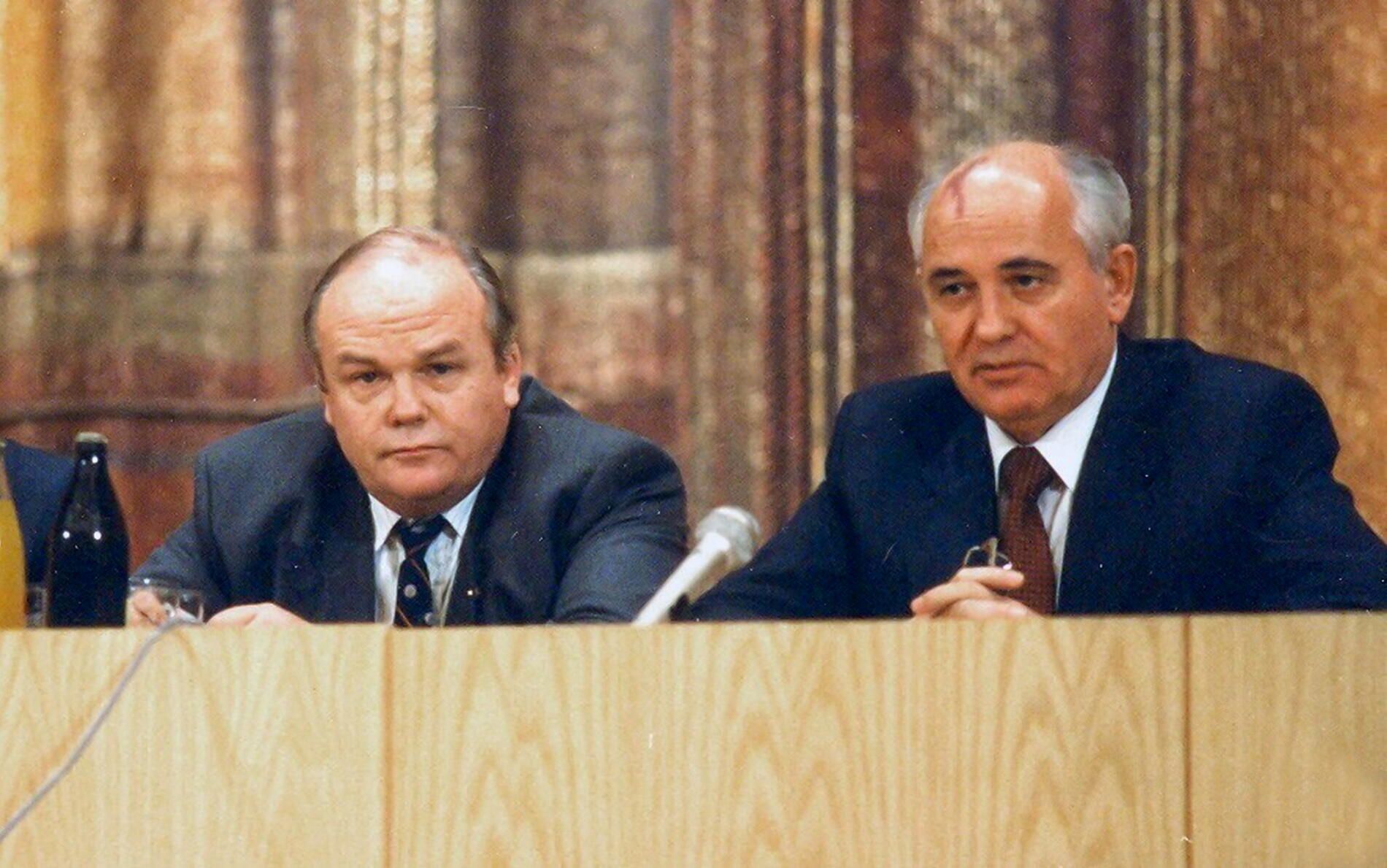
Evgeny Velikhov (left) and Soviet General Secretary Mikhail Gorbachev were friends from their student days at Moscow State University. Kurchatov Archives
Engagement in arms control
In March 1983, President Ronald Reagan gave a speech in which he launched his Strategic Defense Initiative by calling upon American scientists to join in an effort to create defenses that would make nuclear-armed ballistic missiles “impotent and obsolete.”
This galvanized Velikhov to create the Committee of Soviet Scientists for Peace and Against the Nuclear Threat (CSS). The committee carried out studies of likely effectiveness of the anti-ballistic missile systems being discussed in the United States and the destabilizing incentives they would create for both sides to strike first. Some of these studies were later translated and published in English.[2] The CSS also addressed a public “appeal to scientists of the world,” arguing that “there are no effective defense means in nuclear war” and “nuclear disarmament is the only way [to] ensure true security.”
That April, Jeremy J. Stone, then CEO of the US Federation of American Scientists (FAS), a nongovernmental group established by veterans of the Manhattan Project to pursue nuclear disarmament, and one of us (von Hippel, FAS chairman at that time) responded positively to that call.[3]
In November, the FAS leadership flew to Moscow and then Tbilisi in Soviet Georgia for discussions with the CSS leadership (including Sagdeev, who would succeed Velikhov as CSS chairman).[4] Velikhov—always ebullient—met the US group at the Moscow airport wearing a Princeton tie. He had visited Princeton’s Plasma Physics Laboratory several times as head of the Soviet Union’s fusion energy program.
The following month, in response to an invitation from Sen. Ted Kennedy delivered by Stone, Velikhov and three colleagues testified at a US Senate forum on the possibility of nuclear war causing a “nuclear winter.”[5] In June 1984, Velikhov published a critique of the feasibility of space weapons in the Washington Post.[6]
Banning nuclear tests
In March 1985, Mikhail Gorbachev became General Secretary of the Central Committee and immediately launched a broad campaign to reform the Soviet Union and its foreign policy, advocating a policy of “glasnost” [openness]. His first initiative to end the nuclear arms race was on August 6, 1985, when he announced a unilateral moratorium on Soviet nuclear testing.
Underground nuclear testing had not been banned in the 1963 Soviet-UK-US Partial Nuclear Test Ban Treaty because of the Soviets’ unwillingness to agree to the US demand for up to five inspections per year inside the Soviet Union at the locations of suspicious seismic events.[7]
In October 1985, at a conference in Copenhagen on Niels Bohr’s proposal for an “Open World,” Velikhov informed von Hippel of an astonishing reversal of Soviet government secrecy: The Soviet Union would be willing to allow a foreign group to set up seismometers around the main Soviet test site near Semipalatinsk in Kazakhstan.[8]
One of us (Cochran), then with the Natural Resources Defense Council (NRDC), was already advocating for a joint project to set up seismic stations around both Soviet and US nuclear test sites.
In May 1986, Velikhov and von Hippel organized an international meeting at the Soviet Academy’s headquarters to discuss how to proceed with a demonstration of in-country test ban verification. The US delegation included Cochran, Bill DeWind (then NRDC chairman), and Charles Archambeau, a US theoretical seismologist. Velikhov had just returned from Chernobyl where he had been serving as a technical advisor to the effort to stop the release of radioactivity from Unit 4 and had accumulated a large radiation dose including in a helicopter hovering over the reactor trying to determine the condition of the core.[9]
At the meeting, Cochran presented his proposal for joint verification of the principal nuclear test sites in the Soviet Union and the United States. Velikhov signed an agreement to proceed on behalf of the Soviet Academy of Sciences, and DeWind signed on behalf of NRDC. Archambeau agreed to organize a team of seismologists for the NRDC. Velikhov urged that they come to the Soviet Union in about a month—long before a Soviet monitoring team would be allowed to go to the United States.
When the initiative was discussed in the Politburo, there was strong opposition to the proposed unilateral openness. But the NRDC had moved quickly and, in July 1986, US seismologists were already taking measurements less than 200 kilometers from the Soviet test site in Kazakhstan.[10]
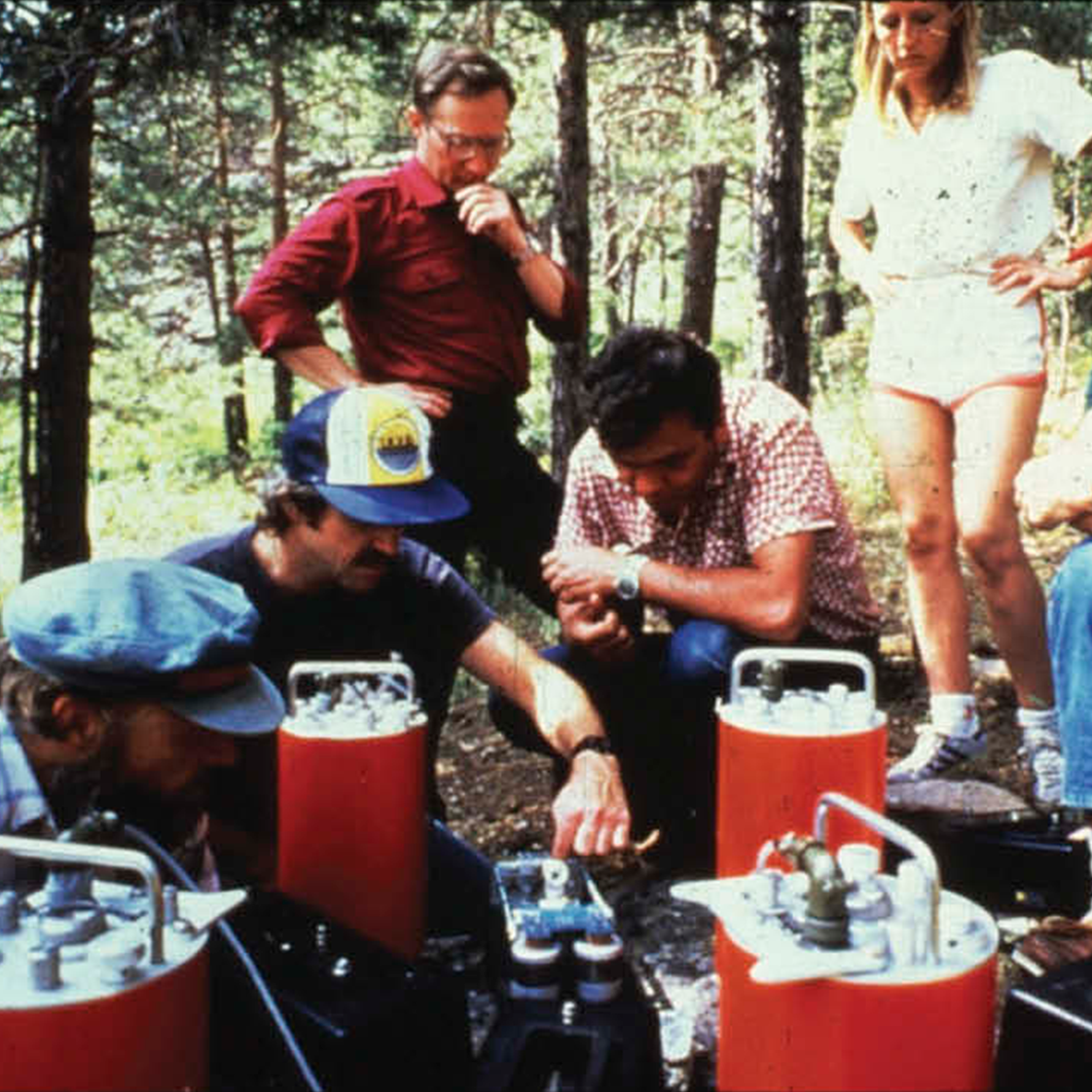
US seismologists with portable seismometers on a granite outcrop in Kazakhstan, July 1986. Thomas Cochran / Natural Resources Defense Council
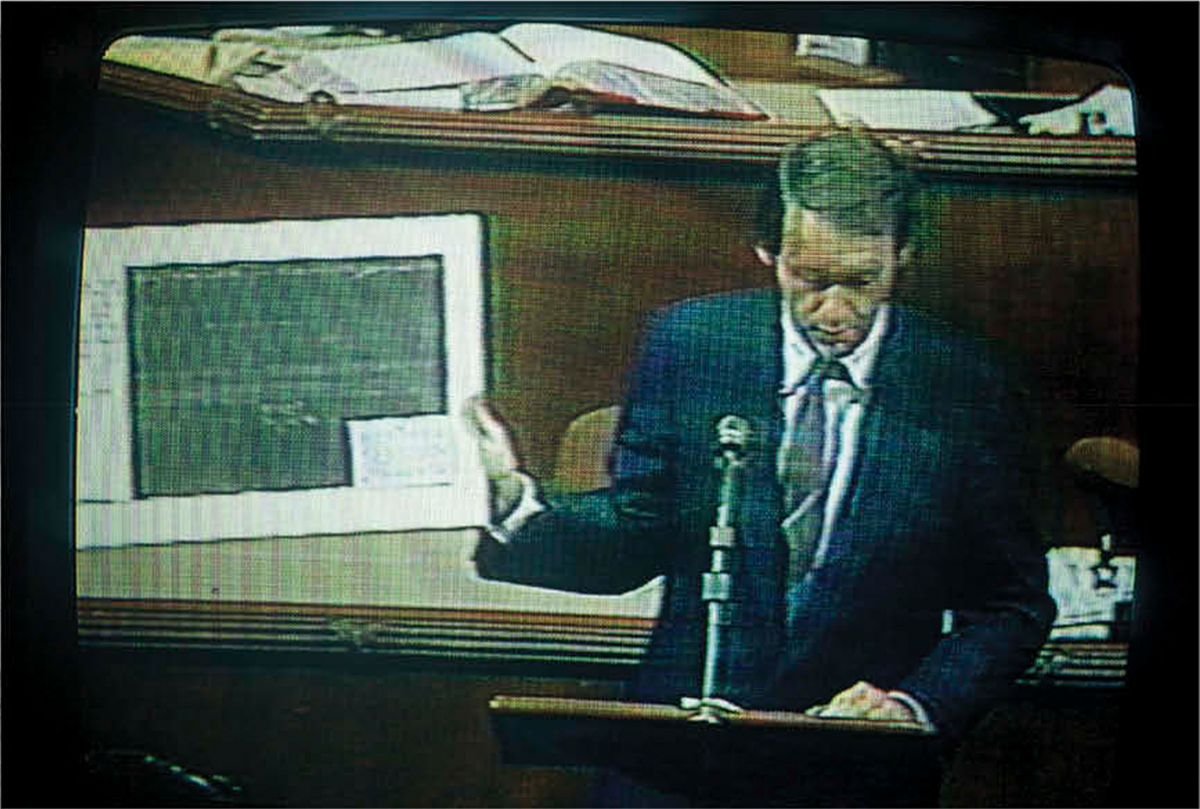
Representative (now Senator) Markey on the floor of the House of Representatives showing the first seismogram on August 8, 1986. C-SPAN
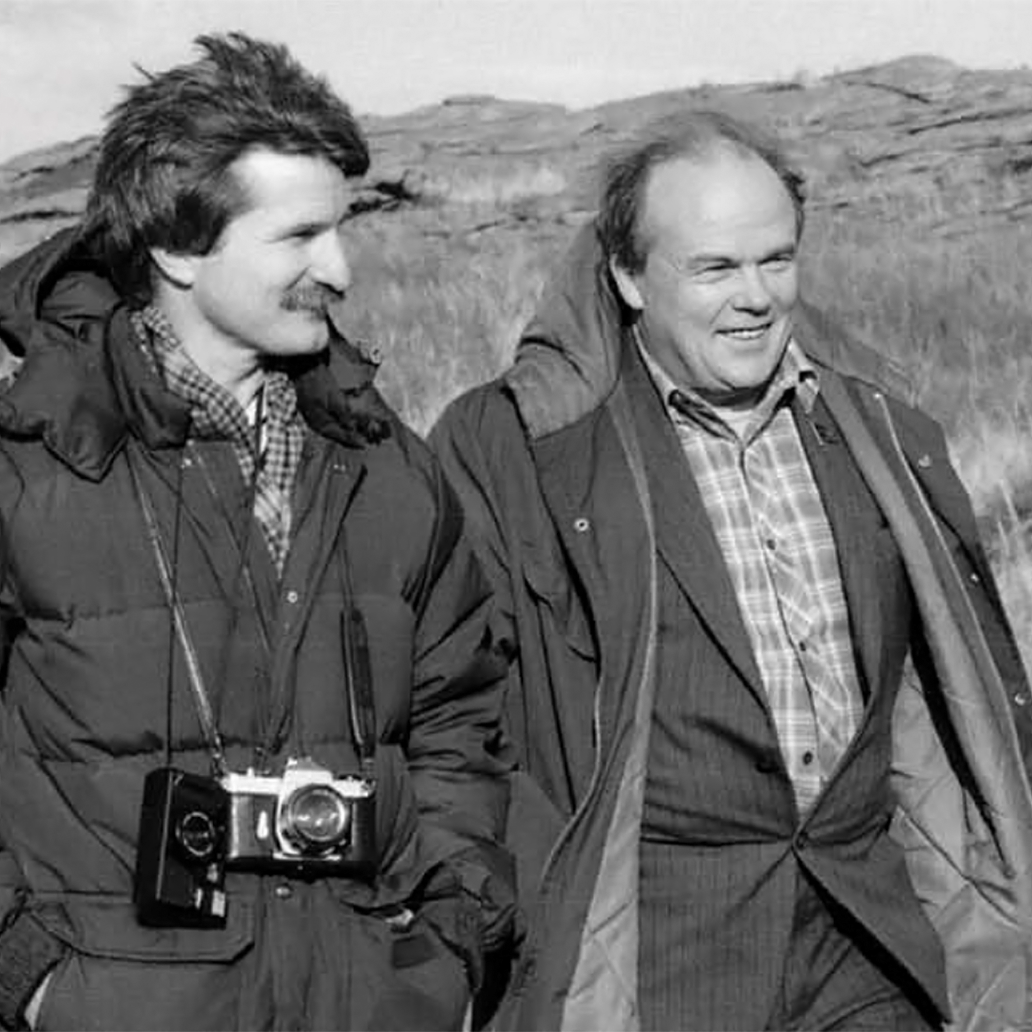
Cochran and Velikhov in Kazakhstan. RIA Novosti
This astonishing demonstration of openness revived support for a Comprehensive Test Ban Treaty (CTBT) within the US Congress. The House of Representatives voted immediately for a one-year moratorium on US nuclear testing above one kiloton if the Soviet Union continued its testing moratorium.[12] Ultimately, in 1992, Congress ordered that, if other countries stopped testing, US nuclear testing would end by October 1996. In the interim, up to 15 final tests could be carried out if needed to deal with questions of warhead safety or reliability. The Clinton administration decided no further safety or reliability-related tests were required and ignored the few last nuclear tests of China and France. The halt in Soviet and US testing made possible the final negotiations on the CTBT, which opened for signature in September 1996.[13]
As of today, 178 countries have ratified the CTBT, but the treaty has not yet come into force because of the lack of ratification by the United States and eight other countries. Nevertheless, it has become an international norm. Only India, Pakistan, and North Korea have tested since 1996.
Follow-on nuclear-glasnost efforts
The success of the nuclear-testing-glasnost initiative led Velikhov and the NRDC to organize others, which included as observers members of Congress and reporters from The New York Times and The Washington Post.
In 1987, they organized a visit to a site in Siberia where an early warning radar was being built. But the radar was not located at the edge of the country and looking outward as required by the 1972 Soviet-US treaty limiting anti-ballistic missiles. (A radar monitoring space over a country could be more effective in guiding missile interceptors.) Three years later, the Soviet government decided to remove this blot on the Soviet record of arms control compliance and began to tear the radar down.
Then, in 1989, the “Black Sea Experiment” demonstrated various approaches to detecting nuclear warheads using an actual Soviet warhead on a Soviet cruiser off Yalta, which had been provided for the bi-national experiment despite the objections of Yuli Khariton, the Soviet counterpart of J. Robert Oppenheimer.[14] Follow-on visits were made to the Soviet Union’s first plutonium production complex, where the visitors could witness that the Soviets had begun shutting down their plutonium production reactors. They also visited a laser facility at the Soviet Union’s ballistic missile defense testing site that the US Defense Department had claimed had anti-satellite capabilities— erroneously, it turned out.[15]

Black Sea Experiment, July 1989. Above: the Soviet cruiser Slava, later renamed Moskva and sunk by Ukrainian cruise missiles on April 14, 2022. Below, from left: on-site measurement of gamma-ray energy spectrum from uranium and plutonium decay in the warhead; helicopter measurement of neutrons from plutonium decay; and launcher opened to show the tip of the supersonic nuclear-armed cruise missile within. Thomas Cochran / Natural Resources Defense Council
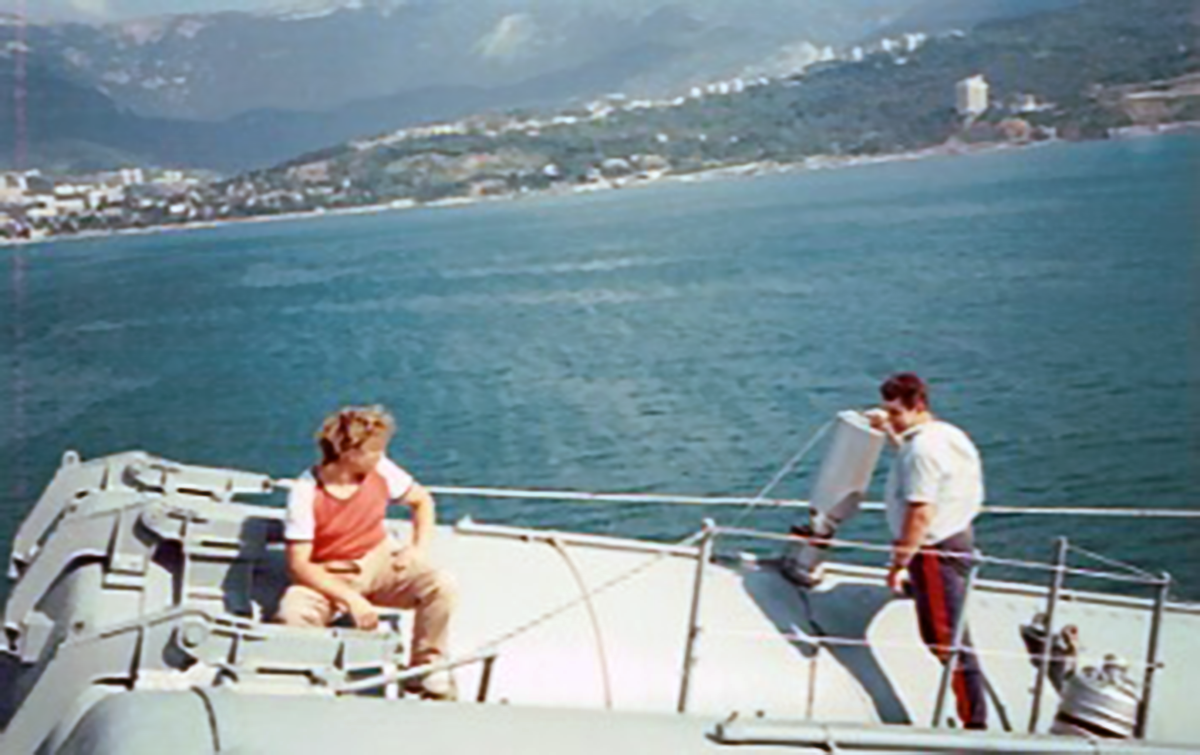
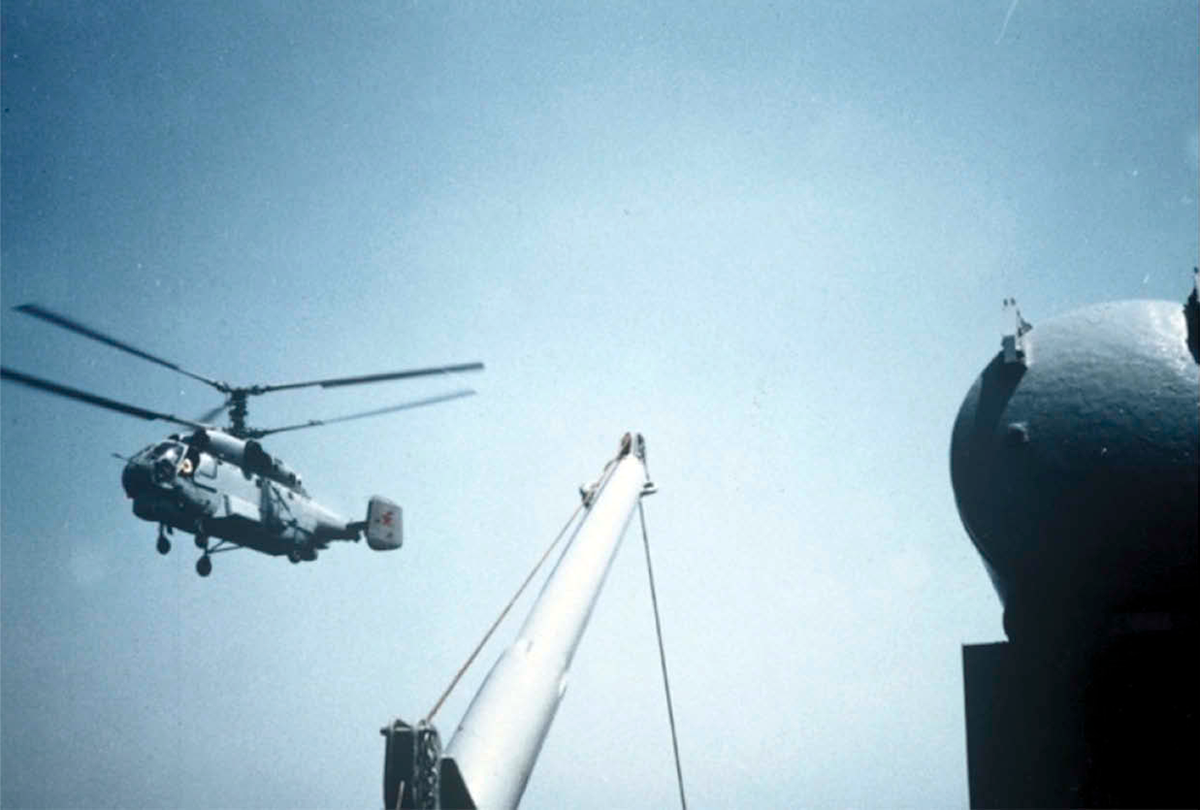
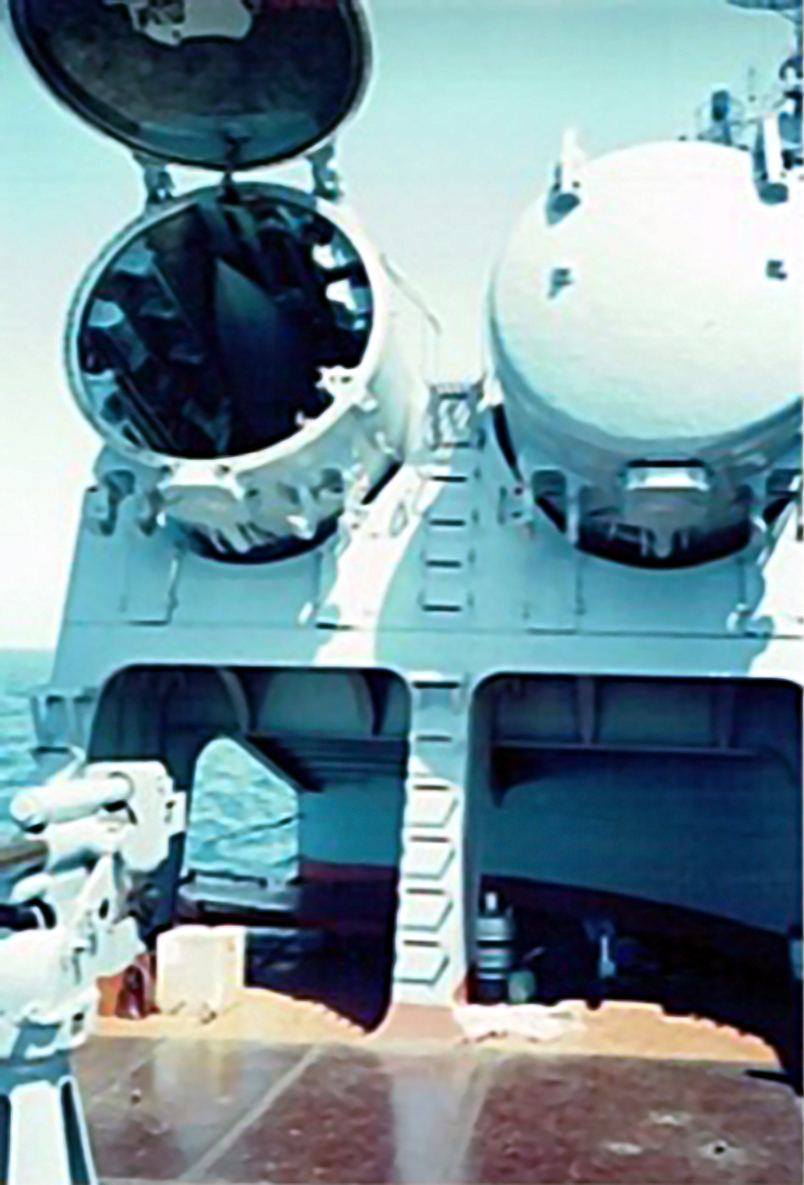
Ending the US-Soviet nuclear arms race
Meanwhile, in February 1987, Velikhov organized eight parallel international forums in Moscow to discuss how to achieve “A Nonnuclear World for the Survival of Mankind.” The forums were attended by scientists, medical doctors, businesspeople, political scientists, religious leaders, cultural figures, retired generals, and environmentalists. They were followed by the presentation of each forum’s conclusions to Gorbachev[16] and a speech by him.
The planning for this event put overwhelming pressure on the Politburo to allow Andrei Sakharov to return to Moscow for the event. Because of Sakharov’s essential contributions to the design of the Soviet hydrogen bomb, he had been allowed unusual latitude in his human rights activism, which resulted in him being awarded the Nobel Peace Prize in 1975 as the “conscience of humanity.” In 1979, however, after he denounced the Soviet invasion of Afghanistan, the Politburo exiled Sakharov to Gorky, out of reach of foreign journalists.
Sakharov was allowed to return to Moscow in time for the scientists’ forum and used that opportunity to call for the Soviet leadership to drop its condition for deep cuts to the nuclear arsenal, which was that the United States continue to comply with the limits of the 1972 Anti-Ballistic Missile Treaty. He argued that space weapons would be a “Maginot Line in space,”[17] conjuring up France’s impressive line of fortifications along its German border that the German army bypassed in World War I. And, indeed, after Reagan completed his two terms as president, the United States did quietly abandon his Strategic Defense Initiative.
Others, including Velikhov and Sagdeev, had been making the same arguments to Gorbachev but Sakharov’s public argument with no effective rebuttal helped persuade the Politburo to disconnect the negotiations on deep nuclear cuts from constraints on ballistic missile defense.
The 1987 scientists’ forum in Moscow also provided a platform for West European advocates of “nonoffensive defense” to lay out their arguments for deep cuts in the tanks and other heavy offensive conventional weaponry arrayed on either side of the dividing line between the territories defended by NATO and the Warsaw Pact. This confrontation had resulted in a huge parallel buildup of battlefield nuclear weapons in case either side crossed the line.
The following year, Gorbachev announced the Soviet Union would unilaterally withdraw 5,000 Soviet tanks and other offensive weaponry from East Europe. This enabled the 1990 Treaty on Conventional Forces in Europe, in which the Warsaw Pact countries reduced their offensive weaponry down to NATO levels and, in the fall of 1991, the elimination of almost all Soviet and US land-based battlefield nuclear weapons.[18]
Velikhov was therefore instrumental in the successful effort to end the Cold War nuclear arms race and in the subsequent downsizing of the combined US and Soviet/Russian nuclear arsenals by a factor of about eight from their 1986 peak.[19]
After Gorbachev
Following the dissolution of the Soviet Union at the end of 1991, Velikhov continued to be influential in the newly founded Russian Federation. He persuaded Russia’s President Boris Yeltsin to sign an edict that the Kurchatov Institute would not be privatized and helped the Soviet Academy transition back to the Russian Academy of Sciences.
In 1991, in partnership with Junior Achievement USA, Velikhov and his wife launched a program in Russia to help youngsters learn “principled market-based economics and entrepreneurship.”[20] In his 2012 memoir, he estimated that “[n]early one million students a year from classes 1 to 11 are trained under this program.”[21]
Under Vladimir Putin, Velikhov served as the first chairman of the Civic Chamber of the Russian Federation, which was established in 2006 “to help citizens interact with government officials and local authorities.”[22] Velikhov ends his memoir with a nuanced discussion of the Civic Chamber:
The Constitution gives full power to the citizen, but all the previous constitutions declared that as well … [A] joke about a conversation between a commoner and a lawyer is still valid:
The commoner asks: "Do I have a right to…?"
The lawyer, without waiting for the end of the question, answered firmly, "Yes you do."
The commoner replies, "And can I…?"
"No, you can’t."
We live in a confused time in Russia, in a hellish mixture of wild capitalism and the remnants of serfdom and a socialist utopia. The authorities, still largely united with criminal money at the municipal level, seize public property and fiercely guard it both from the state and from the citizens. I think that the mission of the Civic Chamber, in collaboration with the legislative, executive and judiciary powers, consists of the liberation of society from those traps. This is a lengthy process, as is shown by the experiences of many countries; it requires perseverance, patience and a certain cultural level of both the authorities and the citizens.”[23]
As Velikhov told one of us in 1990, when the hard-liners were beginning to mobilize against Gorbachev, “You should not fall dead before you are shot.”
Velikhov did not. His dedication and achievements in reducing the threat of nuclear war serve as a lasting model for creative activism on the largest scale.
[1] Evgeny P. Velikhov, “Science and Scientists for a Nuclear-Weapon-Free World, Physics Today, November 1989, 32-36, https://pubs.aip.org/physicstoday/article/42/11/32/405470/Science-and-Scientists-for-a-Nuclear-Weapon-Free.
[2] See e.g. R. Z. Sagdeev and A. A. Kokoshin, eds. “Space-Strike Arms and International Security,” published as a chapter in a volume of Pugwash papers, Strategic Defenses and the Future of the Arms Race (John Holdren, ed. Springer-Nature, 1987) https://link.springer.com/chapter/10.1007/978-1-349-18675-4_3;” and E.P. Velikhov, R.Z. Sagdeev and A.A. Kokoshin, Weaponry in space: the dilemma of security (Mir publishers, 1986), both originally published in Russian in 1983-4.
[3] Federation of American Scientists, Public Interest Report (FAS PIR) May 1983, https://faspir.fas.org/archive/1982-1989/May1983.pdf, 11-12.
[4] FAS PIR, December 1983, https://faspir.fas.org/archive/1982-1989/December1983.pdf.
[5] FAS PIR, January 1984, https://faspir.fas.org/archive/1982-1989/January1984.pdf.
[6] E. P. Velikhov, “A Soviet Scientist's Dim View of Space Weapons,” Washington Post, June 23, 1984.
[7] William Burr and Hector L. Montford, eds. “The Making of the Limited Test Ban Treaty, 1958-1963” (National Security Archive, 8 August 2003, https://nsarchive2.gwu.edu/NSAEBB/NSAEBB94/.
[8] The other Soviet test site in Novaya Zemlya in the Arctic was seismically well covered from Norway.
[9] Evgeny P. Velikhov, Strawberries from Chernobyl, translated by Andei G. Chakhovskoi, 2012, 244-254.
[10] Strawberries from Chernobyl, 240-241. See also, J. Berger, J. N. Brune, and P. A. Bodin, J. S. Gomberg, D. M. Carrel, K. F. Priestley, D. E. Chavez, W. R. Walters, C. B. Archambeau, T. B. Cochran, I. L. Nersesov, M. B. Gokhberg, O. A. Stolyrov, S. K. Daragen, N. D. Tarassov, and Y.A. Sutelov, “A New U.S.-U.S.S.R. Seismological Program,” Eos, Transactions, American Geophysical Union, Vol. 68, No. 8 (February 24, 1987), https://www.semanticscholar.org/paper/A-New-U.S.-U.S.S.R.-Seismological-Program-Berger-Brune/48f15de60f5bbfd03a197c4c421aad815263bb0c
[11] Edward Markey, Congressional Record, August 8, 1986, 19920.
[12] Congressional Record, August 8, 1986, 19914-19934.
[13] Frank von Hippel, “The Decision to End U.S. Nuclear Testing,” Arms Control Today, December 2019, 14-20.
[14] Steve Fetter and Frank von Hippel, “The Black Sea Experiment: US and Soviet Reports from a Cooperative Verification Experiment,” Science & Global Security 1 (1990) 323-333, https://scienceandglobalsecurity.org/archive/sgs01fetterC.pdf.
[15] Bill Keller, “American Team Gets Close Look at Soviet Laser,” New York Times, July 9, 1989.
[16] Frank von Hippel, “A U.S. Scientist addresses Gorbachev,” Bulletin of the Atomic Scientists, May 1987, 12-13, https://sgs.princeton.edu/sites/default/files/2019-10/vonhippel-1987.pdf.
[17] Andrei Sakharov, Moscow and Beyond: 1986 to 1989 (New York: Alfred A. Knopf, 1991) 22.
[18] “Declassified documents tell inside story of “most spontaneous and dramatic reversal” of the arms race. Bush initiatives took up Gorbachev proposals from years earlier; combined effect produced “real disarmament at lightning speed” (National Security Archive, September 30, 2016, https://nsarchive.gwu.edu/briefing-book/nuclear-vault-russia-programs/2016-09-30/unilateral-us-nuclear-pullback-1991-matched.
[19] “Nuclear Notebook,” Bulletin of the Atomic Scientists, https://thebulletin.org/nuclear-notebook/.
[20] “About [Junior Achievement],” https://jausa.ja.org/about/index.
[21] Strawberries from Chernobyl, 262.
[22] https://en.wikipedia.org/wiki/Civic_Chamber_of_the_Russian_Federation.
[23] Strawberries from Chernobyl, 306.
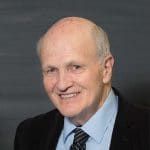
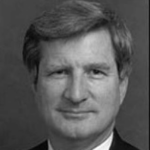
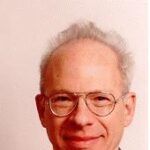
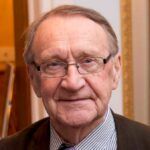
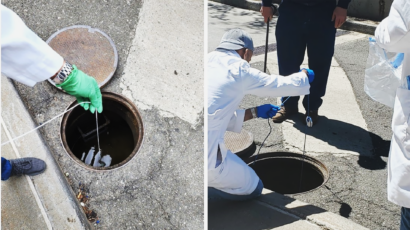
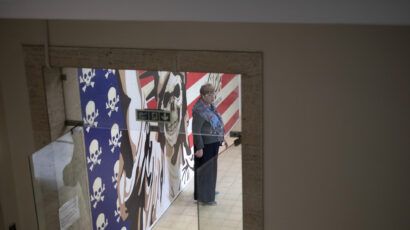
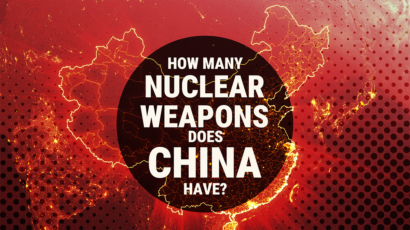
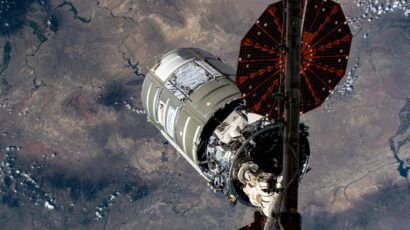
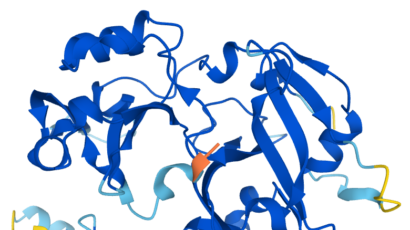
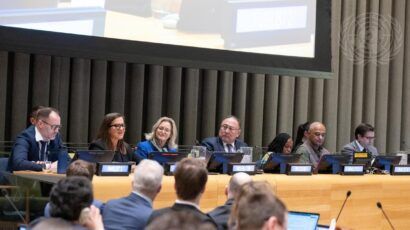
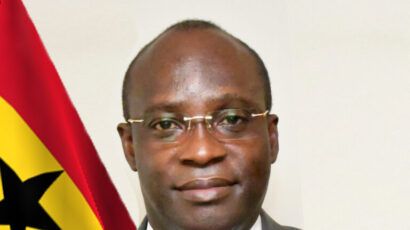
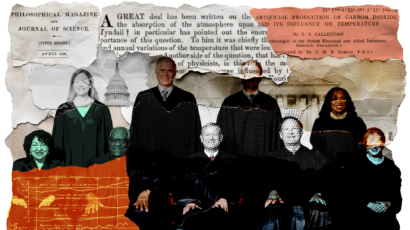
I was a PhD student at the Plasma Research Department of the Kurchatov Institute of Atomic Energy, headed by Velikhov, and I had a chance to talk to him about physics and nuclear disarmament. He expressed deep bitterness toward those responsible for violating Washington’s pledge to Gorbachev not to expand NATO one each East and solidarity with many prominent American politicians and experts with geostrategic vision who started warning after the end of the Cold War that NATO expansion could lead to a major crisis and even nuclear WWIII. If one puts it in chronological order, I would start with… Read more »
Congratulations for this article, very appropriate in the current times, in a direction contrary to the efforts made in the eighties and early nineties in favor of trust, transparency and, ultimately, world peace.
Sorry, one typo in the 2nd paragraph
He expressed deep bitterness toward those responsible for violating Washington’s pledge to Gorbachev not to expand NATO one inch East and solidarity with many prominent American politicians and experts with geostrategic vision who started warning after the end of the Cold War that NATO expansion could lead to a major crisis and even nuclear WWIII.